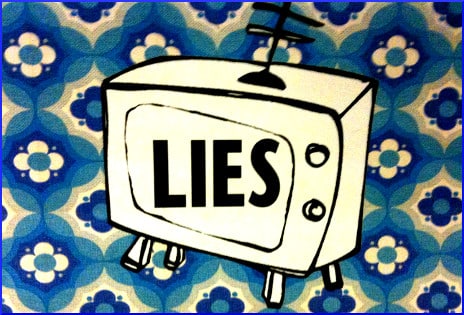
Of course Big Food grumbled about being blamed for providing people with what people want, and muttered about their right to tell people about the available products. After all, the consumption of advertising is not mandatory. Nobody is being restrained with eyelids forcibly retracted, Clockwork Orange style, and made to watch TV ads. People are free to change the channel, turn it off, or throw it out the window.
It does sound reasonable, that a voice should be allowed to speak and a set of ears should be allowed to hear it. Then, the mind behind those eyes and ears should be allowed to ignore that speech. It’s a solid argument, based on the First Amendment as a core American value.
Kids are different
The problem is, children are different, and even adolescents are a special case. Kids have to be a certain age to marry, own a gun, vote, buy cigarettes or alcohol, drive a car, or do a great number of other things. Maybe they should reach a certain age before being allowed to experience any advertising. That would be impossible, of course, but the impulse to legislate the amount of advertising kids are exposed to is totally understandable.
One objection to unbridled commercialism has always been that children don’t have the intelligence, experience, or judgment to know when a message should be ignored. How could they? At home and at school, the rule is that the grownups know best, and are to be obeyed.
It is rather ridiculous to expect kids to understand the nuances of allowable exceptions. No matter how much music it plays or how many bright colors and adorable cartoon characters it displays, TV is just another grownup issuing directives — which children are preconditioned to obey.
Time rolls on
The other big problem is, while all the debate was going on, network TV became increasingly irrelevant. Gone are the days when children waited all week for the Saturday morning cartoon shows. The explosive growth of all kinds of media, and particularly the Internet, made prohibition a pipe dream. Enormous numbers of kids have unimaginable amounts of entertainment available to them 24 hours a day, with never a day off.
Between 2008 and 2011, a combination of institutional pressure, media awareness, and public outcry caused food manufacturers to curb their acquisitive instincts a bit, and pull back on television advertising directed at children. “The Food Marketing Defense Model: Integrating Psychological Research to Protect Youth and Inform Public Policy” probably had a lot to do with that temporary relief.
In 2009, the research team of Jennifer Harris, Kelly Brownell and John Bargh published this monumental paper (with 262 references) that seems to include everything known, posited, suspected, observed, thought, or shown about kids and advertising, up to that point in time. Both comprehensive and comprehensible, it is a surprisingly accessible academic work that an average person could read in one long evening, and emerge feeling like an expert.
This is a very short description of the premise and the project:
Marketing practices that promote calorie-dense, nutrient-poor foods directly to children and adolescents present significant public health risk.
We propose a food marketing defense model that posits four necessary conditions to effectively counter harmful food marketing practices: awareness, understanding, ability and motivation to resist.
The paper also explains “why many commonly proposed solutions are unlikely to resolve the problem” and addresses one of those commonly proposed solutions, which is to let the advertising arm of the food industry police itself:
Given the financial bonanza that is the youth market, the clear importance to industry to foster brand loyalty early in life, and the ease of convincing children to eat foods high in sugar, fat, and salt, there is every reason to distrust the motives of industry self-regulation…
Childhood Obesity News will be talking more about that concept.
Your responses and feedback are welcome!
Source: “The Food Marketing Defense Model: Integrating Psychological Research to Protect Youth and Inform Public Policy,” NIH.gov, 2009
Image by Ged Carroll

 FAQs and Media Requests:
FAQs and Media Requests: 











